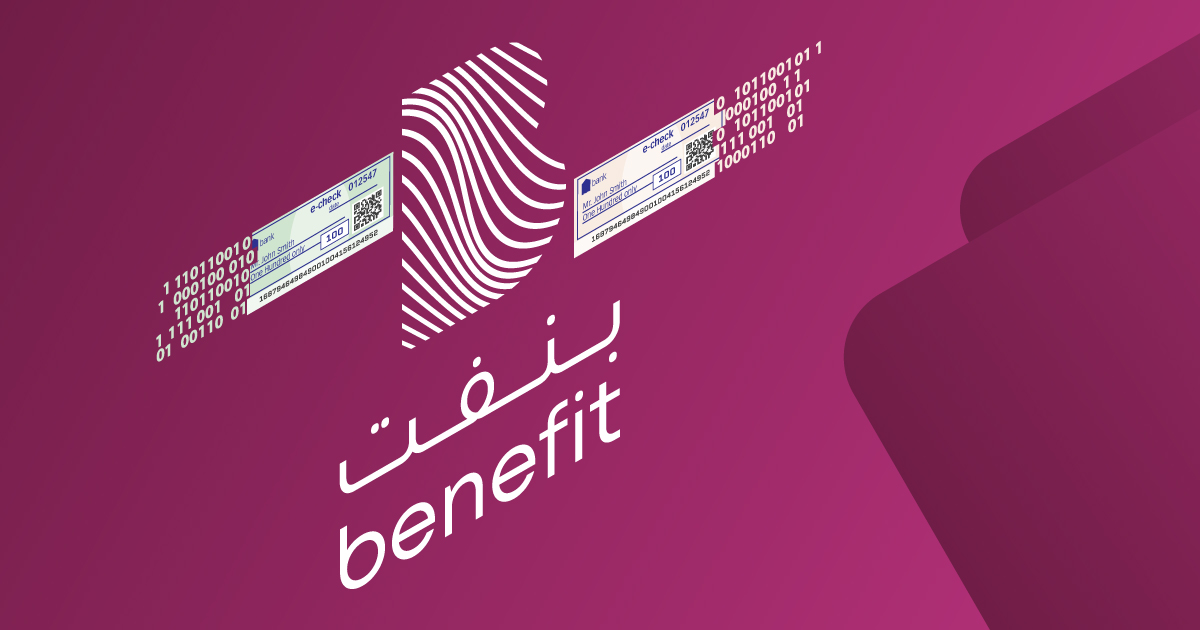
July 16, 2022
In Conversation with the BENEFIT Company

In this month’s issue of Central Bank Payments News, ProgressSoft speaks with its client, Shafaq AlKooheji, Head of Payment Services at the BENEFIT Company, about the development, launch and adoption of ProgressSoft’s Electronic Check Issuance solution in Bahrain as part of the Central Bank of Bahrain’s broader digital transformation strategy.

Cheques have been around for hundreds of years now, and there are tons of ANSI and ISO standards that have been set to control the production, security, regulation and processing of paper-based cheques. Why did Bahraini regulators decide to adopt electronic cheques?
SHAFAQ ALKOOHEJI: Bahrain has a clear, defined strategy for digitalizing its economy and has always played a pioneering role in the digitalization of its payment infrastructure. The decision to digitalize cheques is part of the digital transformation strategy of the Central Bank of Bahrain (CBB) and the government. Digitalizing cheques will enable the trading and market in Bahrain to benefit from all the legal validity and functionalities of cheques in a completely paperless digital means.

Can you briefly tell us the story behind the electronic cheque project in Bahrain, such as how it was initiated, developed and executed, and how you prepared for the project launch?
SHAFAQ ALKOOHEJI: CBB guidance and support was vital for the success of the e-cheque. This is in addition to the synergy between different entities within Bahrain’s governmental bodies, such as the support of the Telecommunication Regulatory Authority (TRA), in the trust service provider licensing, which was another important success factor. The introduction of the e-cheque from a project idea to the designing and planning of the scope and requirements, to the implementation and testing of the product, ‘til the go live was a result of a true partnership at the industry level between the regulators, BENEFIT as an operator, and the banks and major users and providers of cheques services in the Kingdom.

Introducing a pioneering innovation that utilizes key public infrastructure to convert both a payment instrument and a wet signature seems to pose a real challenge. How did you manage to acquire the specific technical knowledge needed to understand such technologies within this new innovative direction?
SHAFAQ ALKOOHEJI: BENEFIT was blessed by many partners throughout the implementation of the e-cheque project. The tremendous support and guidance given to the project from the owner of the digital signatures and certificate enabled BENEFIT to acquire the required set of skills. Moreover, BENEFIT was also blessed by state-of-the-art partners and vendors in the process of implementing the trust services in Bahrain for digital signature, from EY as consultant of product implementation, to ProgressSoft and Cryptomathic as technology providers, to Certi-Trust as auditors assessing the compliance of BENEFIT’s module against the best international practices. Not to forget TRA, as the accreditation body, for confidence and providing BENEFIT with the first trust service provider license in Bahrain.

The cheque is an instrument that is deeply legalized and strongly regulated. We can imagine that you had to go through cycles of legislative and regulatory changes and amendments to support this new solution. What are the basic laws, acts and legislation that the country needed to alter or even introduce to support this change?
SHAFAQ ALKOOHEJI: Multiple laws had to be published before allowing the e-cheque to exist as a service. It started with the issuance of two royal decrees: one for electronic financial transactions and communication law, the other for electronic transferable records. Each regulator had to issue multiple amendments or new resolutions to support the project. TRA issued resolutions 4 and 5 of 2021 regarding trust services controlling and governing the operations of digital certificates and signatures. Moreover, CBB as well issued resolution number 13 of 2020 and the BECS directive detailing the regulator guidelines of providing the e-cheque service and an electronic transferable record managed by a central electronic record management system.

Usually, when a new innovative solution is introduced, it causes disruption within the industry. What steps, if any, did you take to minimize the solution’s disruption in the banking sector?
SHAFAQ ALKOOHEJI: The first important factor is not discounting any of the current legal power of the benefits of paper cheques. The cheque as a payment method or a negotiable instrument is a key factor of why cheques are still popular within trading transactions in Bahrain. Thus, all that the CBB and BENEFIT did was to convert the paper cheque into electronic, without impacting the market use cases of the cheques, with an easy user-friendly process to both banks and customers.

The cheque is a public instrument that is used by corporate clients as well as retail customers. How did you address end consumers’ needs and user experience requirements for the new way of issuing and signing cheques?
SHAFAQ ALKOOHEJI: The process of cheque issuance for a corporate client differs from that of retail. The simple process of issuing a cheque by a retail client was a main factor in the design of the access channel UX/UI. As for corporate with authorized signatories and authority matrix requirements, the whole process was automated and is preconfigured in the e-cheque to assure a straight-through smooth experience for cheque writing and signatures from small and medium enterprises to the complex, sophisticated businesses in Bahrain.

An electronic cheque and an electronic signature require some level of awareness by end consumers. What steps did you take to develop that awareness in the market, and how did the market respond once the project was launched?
SHAFAQ ALKOOHEJI: CBB, BENEFIT, and the banks worked together on a national campaign targeting retail and corporate customers. Standardized videos explaining the why and how, along with FAQs, for e-cheques were published for the public using digital means and social media. The easy user experience and smooth registration of the retail customers on BenefitPay enabled the market adoption of e-cheques for registered customers to exceed expectations.

A significant amount of feedback is often collected from different stakeholders when a new solution (such as electronic cheques) is introduced to the market. As we are aware, this has already been done in the first stage. Will another stage be undertaken to address any feedback loops?
SHAFAQ ALKOOHEJI: Definitely, in the first few months of the go live, we came to realize a few gaps that we are working on will close within the coming months. Moreover, by Q3 2022 we will conduct a workshop with all banks, gathering feedback from customers and the market on enhancements that need to be accommodated within the e-cheque service. Enhancement and upgrades of public services such as the e-cheque is an ongoing process that does not end as long as the e-cheque exists.

Finally, the Central Bank of Bahrain made history in October 2021 with the launch of the Bahrain Electronic Cheque System (BECS). What initial impressions do you have of the initiative and, in your view, do you anticipate more developments in this direction in 2022?
SHAFAQ ALKOOHEJI: I believe that with the launch of the e-cheque and enabling digital signature, there are no gaps left within the payment infrastructure that might hinder CBB’s cashless and digital economy strategy. Endorsing the e-cheque with digital signatures provides more trust in the market for cheques as an instrument with strong legal power.


